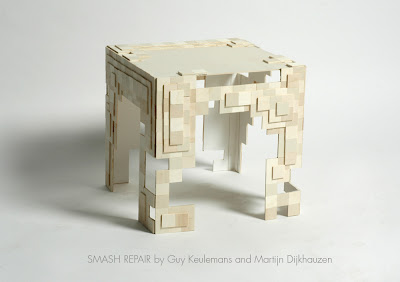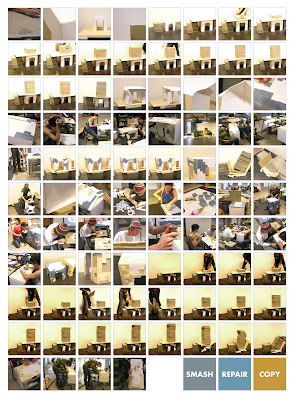The second experiment in “repair aesthetics”. This time Martijn and I used small square “bandages” and a grid layout to map and repair the damage we inflicted on our model. We also duplicated the repair with wood tiles on another model, shown above. The final aesthetic is nice, but unsuccessful in communicating its process I think – unlike self-repair in animals (scars) or plants (see the monkey tree god for an interesting example of tree self-repair).


buehre M says:
Aug 16 at 07:46repairing is not good for the economy of our country but also for the countries that deliver goods to this countryi am against it in general
guy keulemans says:
Aug 18 at 12:05To the above comment; in brief.
Simplistically, you could envision repair as slowing down economic activity and making less cross-culturally dependent communities, but this ignores creation of new job sectors and the increased monetization of repair skills. Additionally, your conception of economics also fails to consider the values outside of economics such as social, cultural and environmental health and whether the a slower economy might be ultimately the best thing for society.
Comments are closed.